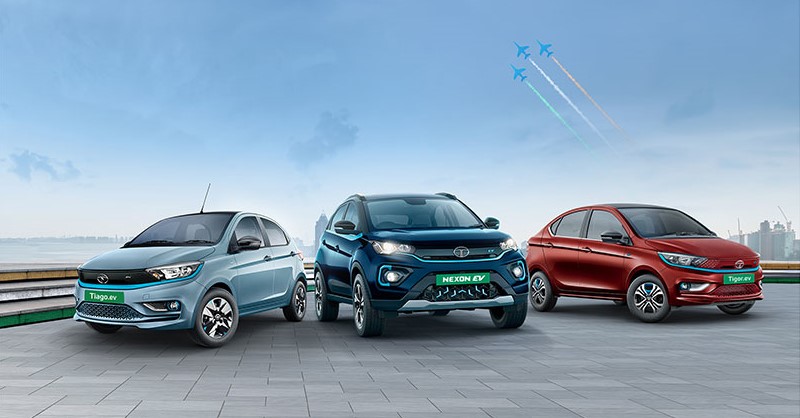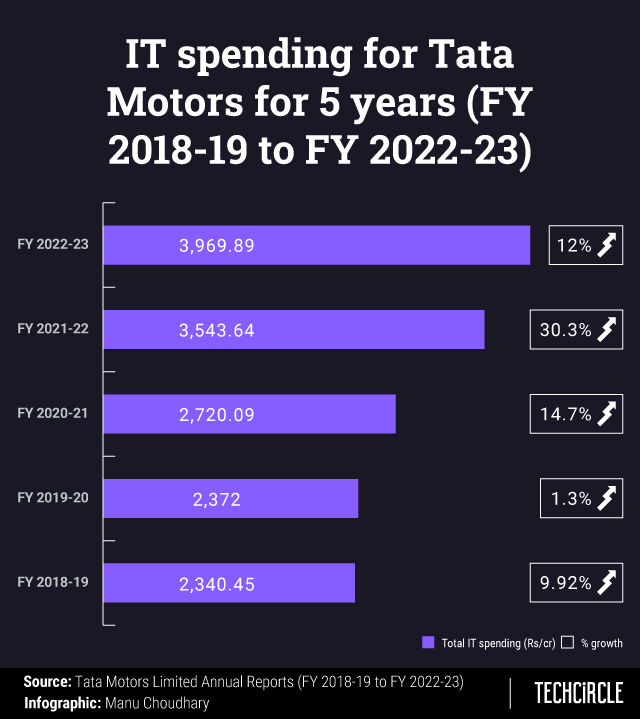
Spend-IT: Tata Motors' annual tech budget nears $500 mn mark


Tata Motors, part of the $128 billion Tata Group, recorded third consecutive year of double-digit increase in its overall technology spending in the fiscal ended March 2023 as the automobile giant sped on the digitisation path.
The Mumbai-headquartered auto major that reported an annual revenue Rs 3.5 lakh crore in 2022-23, up 24% over the previous year, saw its technology spending rise 12% to Rs 3969.89 crore in the year ended March 2023.


One of the key strengths of Tata Motors is its reliance on emerging technologies such as cloud, artificial intelligence/machine learning (AI/ML) and internet of things (IoT) that has steered the company through various challenges in recent years, including the Covid-19 pandemic, shortage of global semiconductor chips and the ensuing global economic crisis.
The company announced in its FY 2022-23 annual results that it is in the “midst of its product portfolio expansion plan” under all three business units – commercial vehicles, passenger vehicles and electric vehicles. For proper back-end synergies for each of its business units, the company is capitalising on the growing role of AI/ML systems.
Tata Motors is already working leveraging Microsoft’s connected vehicle technologies that bring together AI/ML and IoT capabilities on the global hyper-scale Azure cloud, to create a highly personalized, smart and safer driving experience.

Furthermore, in February 2022, Tata Motors subsidiary JLR announced a multi-year strategic partnership with computing company NVIDIA to develop and deliver next-generation automated driving systems coupled with AI-enabled services and experiences for customers, the production of which will begin in 2025.
In January this year, the automaker migrated its entire dealer management system to Oracle Cloud Infrastructure (OCI) to gain faster insights and improve productivity. The dealer management system serves over 60,000 users in pre-sales, sales, and after-sales market touch points across all segments of passenger and commercial vehicles. The company said that the migration has helped them enhance operational efficiency and optimise cost.
As a result of the pandemic, the dependence on digital technologies increased substantially because of the remote working conditions. This in turn resulted in vulnerability to cyber-attacks leading the company to invest in a robust IT system and firewalls to mitigate any threats and risks. Tata Motors is also training its staff and vehicle certifications to mitigate the risk of data privacy of consumers and vehicle hacking.

Further, as the automaker is largely focused on electric vehicle market globally, it has developed a software for controlling its electric powertrains. The software has been developed in-house and used for the company’s testing operations, the company stated in its 2022-23 annual report.
The company also mentioned that it has committed to reduce greenhouse emissions by 46% in its operations and by 54% per vehicle across its entire value chain by 2030, and achieve carbon net zero goals by 2039.
In June this year, JLR announced a strategic partnership with Everstream Analytics, a provider of supply chain mapping and risk analytics solutions. The integration of AI technology will allow JLR to monitor its supply chain in real-time, enabling proactive measures to tackle potential global supply issue, the company said.

The company said in an exchange filing that it will continue its digital transformation journey to support enterprise risk management (ERM) across the business and use AI to monitor its global supply chains.
In July the automaker appointed Rajesh Kannan as the president and chief digital and information officer, senior management personnel of Tata Motors to lead a team of specialists working in the areas of AI/ML and other technology initiatives to achieve desired business outcome in the coming years.
